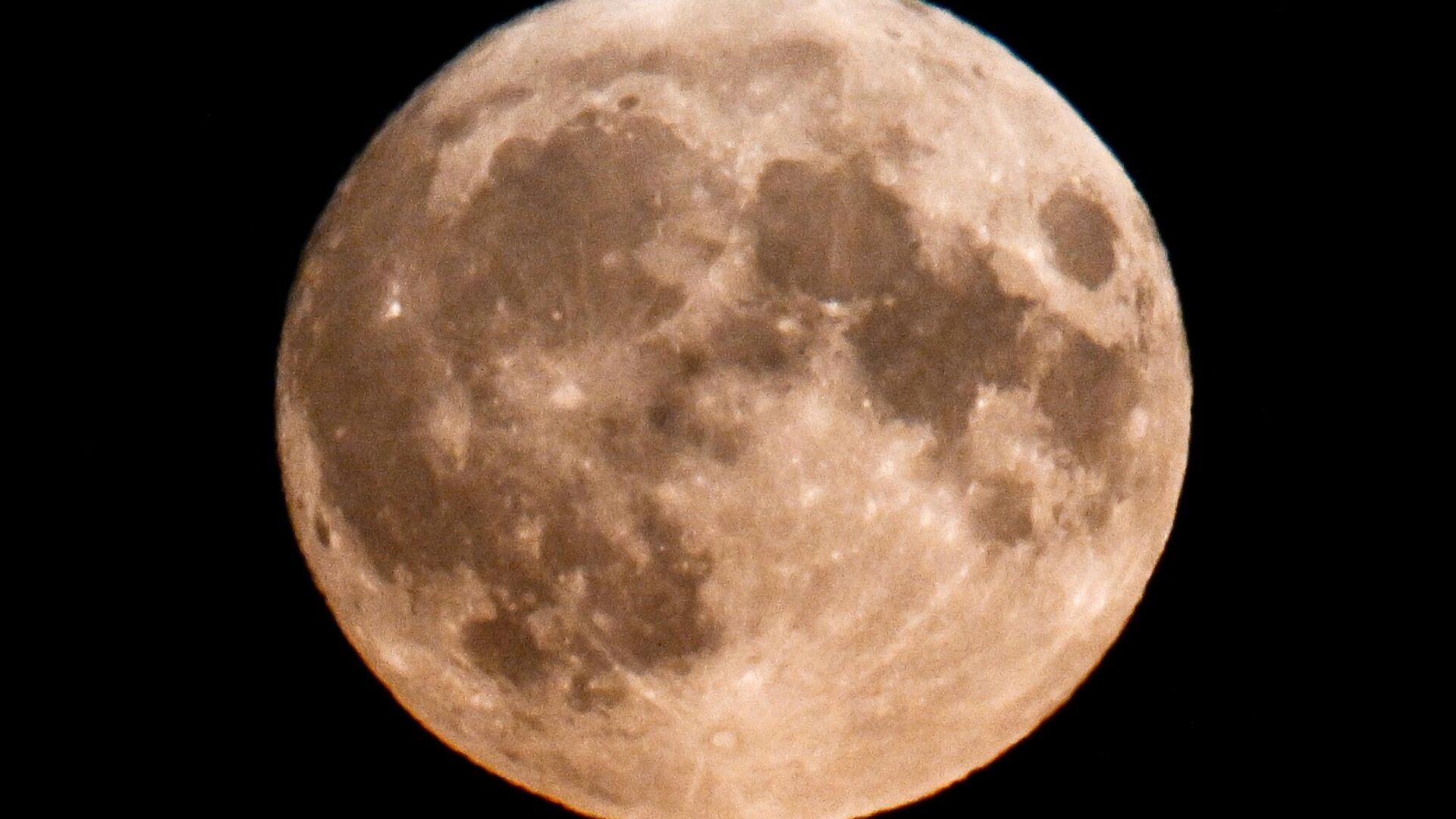https://sputnikglobe.com/20240207/our-shrinking-moon-could-be-a-problem-scientists-warn--1116630773.html
Our Shrinking Moon Could Be a Problem, Scientists Warn
Our Shrinking Moon Could Be a Problem, Scientists Warn
Sputnik International
Our moon has been shrinking for hundreds of millions of years. This could become a problem for a potential site that NASA has had its eyes on for a future manned mission to the Moon.
2024-02-07T05:04+0000
2024-02-07T05:04+0000
2024-02-07T05:04+0000
beyond politics
science & tech
astronomy
moon
nasa
space exploration
https://cdn1.img.sputnikglobe.com/img/07e7/08/1f/1113008688_0:109:2096:1288_1920x0_80_0_0_6e917915256ecacc04009f5969e33f5e.jpg
Our moon has been shrinking for hundreds of millions of years. This could become a problem for a potential site that NASA has had its eyes on for a future manned mission to the Moon. The area is thought to have water deposits that could sustain life, but a new study says the area has been impacted by seismic activity.According to a new study which was published in the Planetary Science Journal, an area near the lunar south pole could be impacted by this seismic activity or “moonquakes”.Over the last few hundred millions years the earth has shrunk about 150 feet (45 meters) in diameter. This is the result of the natural cooling of its molten core, as well as the exertion of tidal forces from Earth. As the Moon’s interior cools, its surface contracts and changes to adjust to its new volume. This shrinking process also results in the ridges known as thrust faults, which are made up of the pushed together crust.Using data from NASA’s Lunar Reconnaissance Orbiter (LRO) which was first launched in 2009, the authors of the study found that an area in the south polar region was impacted by one of the strongest seismic events recorded by seismometers that were left there during NASA’s Apollo program.The news from this study is significant because the Moon has become the location of an international space race, especially since India’s Chandrayaan-3 lander successfully touched down on the Moon in August. Scientists believe that ice can be found in large craters in the Moon’s south pole region, which is permanently hidden in a cool shadow. And NASA is planning to land their Artemis III mission in an area in that region by late 2026 at the earliest."Our modeling suggests that shallow moonquakes capable of producing strong ground shaking in the south polar region are possible from slip events on existing faults or the formation of new thrust faults," said Watters.“The idea is not to discourage anyone from exploring the south pole of the moon, but just to make sure that it’s understood that it’s not a benign environment.”
Sputnik International
feedback@sputniknews.com
+74956456601
MIA „Rossiya Segodnya“
2024
News
en_EN
Sputnik International
feedback@sputniknews.com
+74956456601
MIA „Rossiya Segodnya“
Sputnik International
feedback@sputniknews.com
+74956456601
MIA „Rossiya Segodnya“
moon, moonquake, nasa, science, technology, astronomy, space
moon, moonquake, nasa, science, technology, astronomy, space
Our Shrinking Moon Could Be a Problem, Scientists Warn
The study raises awareness of a restless Moon that is experiencing "moonquakes", some of which may be relatively large, and could threaten future explorations.
Our moon has been shrinking for hundreds of millions of years. This could become a problem for a potential site that NASA has had its eyes on for a future manned mission to the Moon. The area is thought to have water deposits that could sustain life, but a new study says the area has been impacted by seismic activity.
According to a new study which was published in the Planetary Science
Journal, an area near the lunar south pole could be impacted by this seismic activity or “moonquakes”.
“A concept that I think that many people have is that the moon is this geologically dead body, that something on the moon never changes,” said Tom Watters, a senior scientist emeritus in the National Air and Space Museum’s Center for Earth and Planetary Studies and the lead author of the study. “[But] the moon is a seismically active body.”
Over the last few hundred millions years the earth has shrunk about 150 feet (45 meters) in
diameter. This is the result of the natural cooling of its molten core, as well as the exertion of tidal forces from Earth. As the Moon’s interior cools, its surface contracts and changes to adjust to its new volume. This shrinking process also results in the ridges known as thrust faults, which are made up of the pushed together crust.
Using data from NASA’s Lunar Reconnaissance Orbiter (LRO) which was first launched in 2009, the authors of the study found that an area in the south polar region was impacted by one of the strongest seismic events recorded by seismometers that were left there during NASA’s Apollo program.
The news from this study is significant because the Moon has become the location of an international space race, especially since India’s Chandrayaan-3 lander successfully touched down on the Moon in August. Scientists believe that ice can be found in large craters in the Moon’s south pole region, which is permanently hidden in a cool shadow. And NASA is planning to land their Artemis III mission in an area in that region by late 2026 at the earliest.
"Our modeling suggests that shallow moonquakes capable of producing strong ground shaking in the south polar region are possible from slip events on existing faults or the formation of new thrust faults," said
Watters.
"The global distribution of young thrust faults, their potential to be active, and the potential to form new thrust faults from ongoing global contraction should be considered when planning the location and stability of permanent outposts on the Moon," Watters added.
“The idea is not to discourage anyone from exploring the south pole of the moon, but just to make sure that it’s understood that it’s not a benign environment.”


